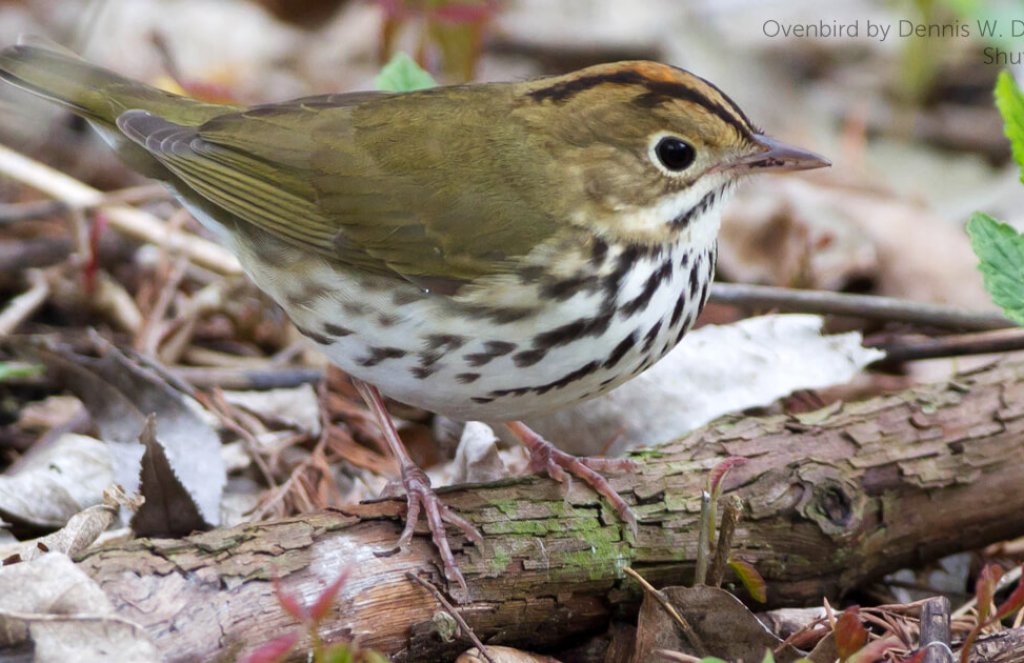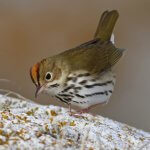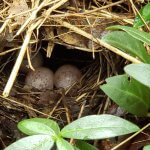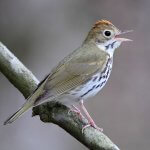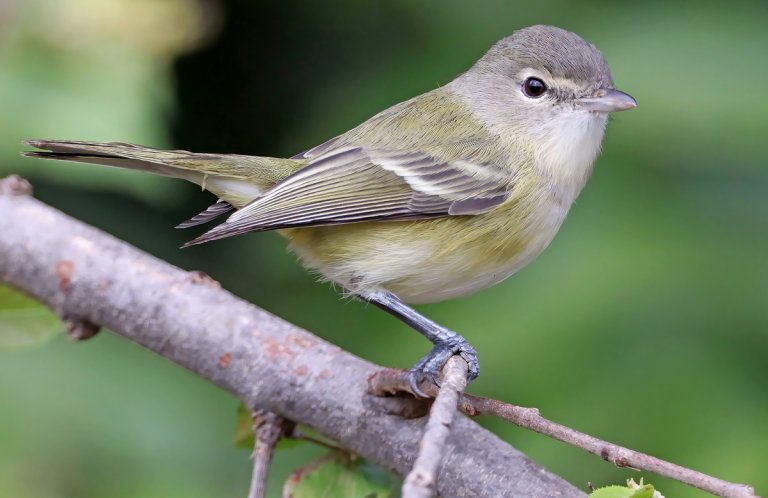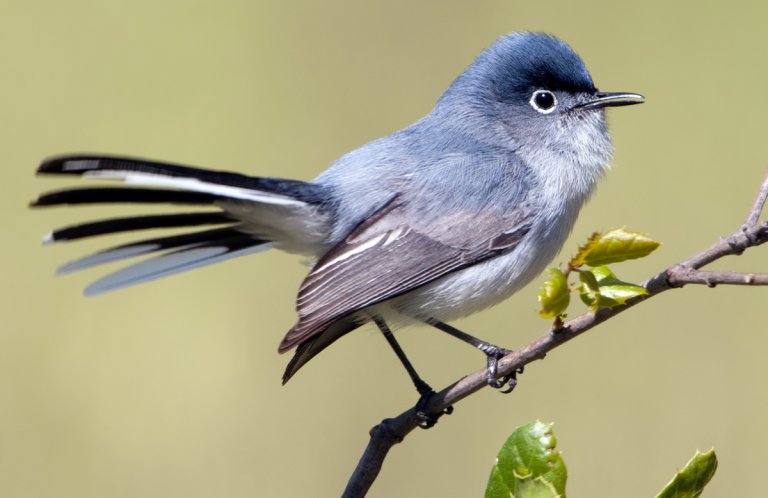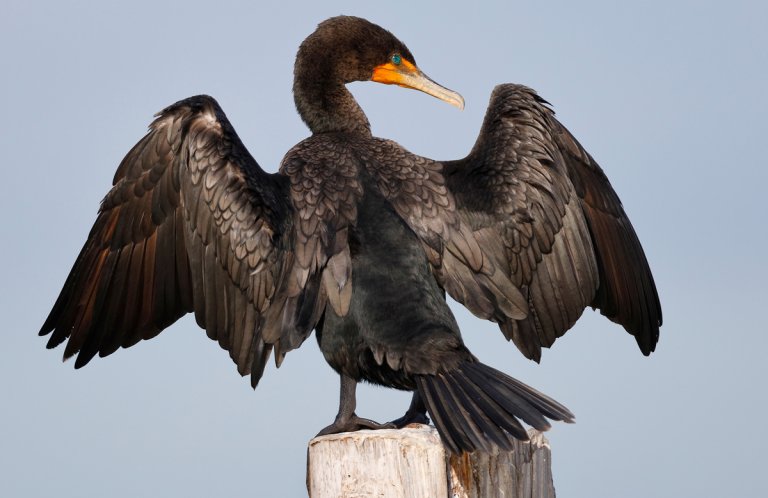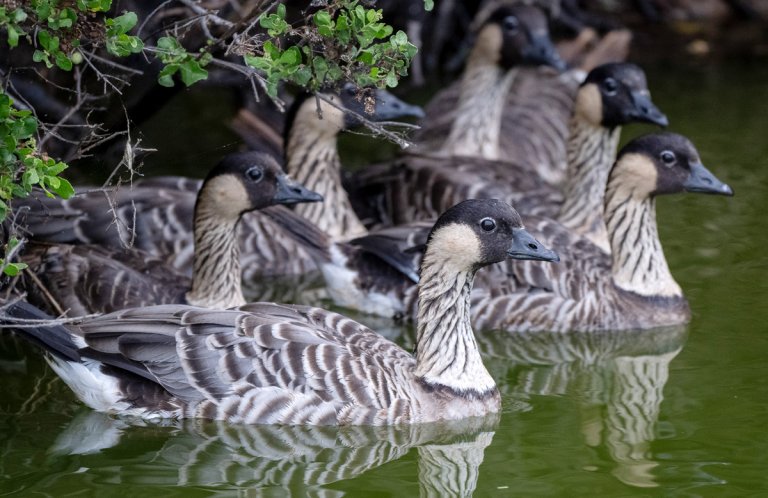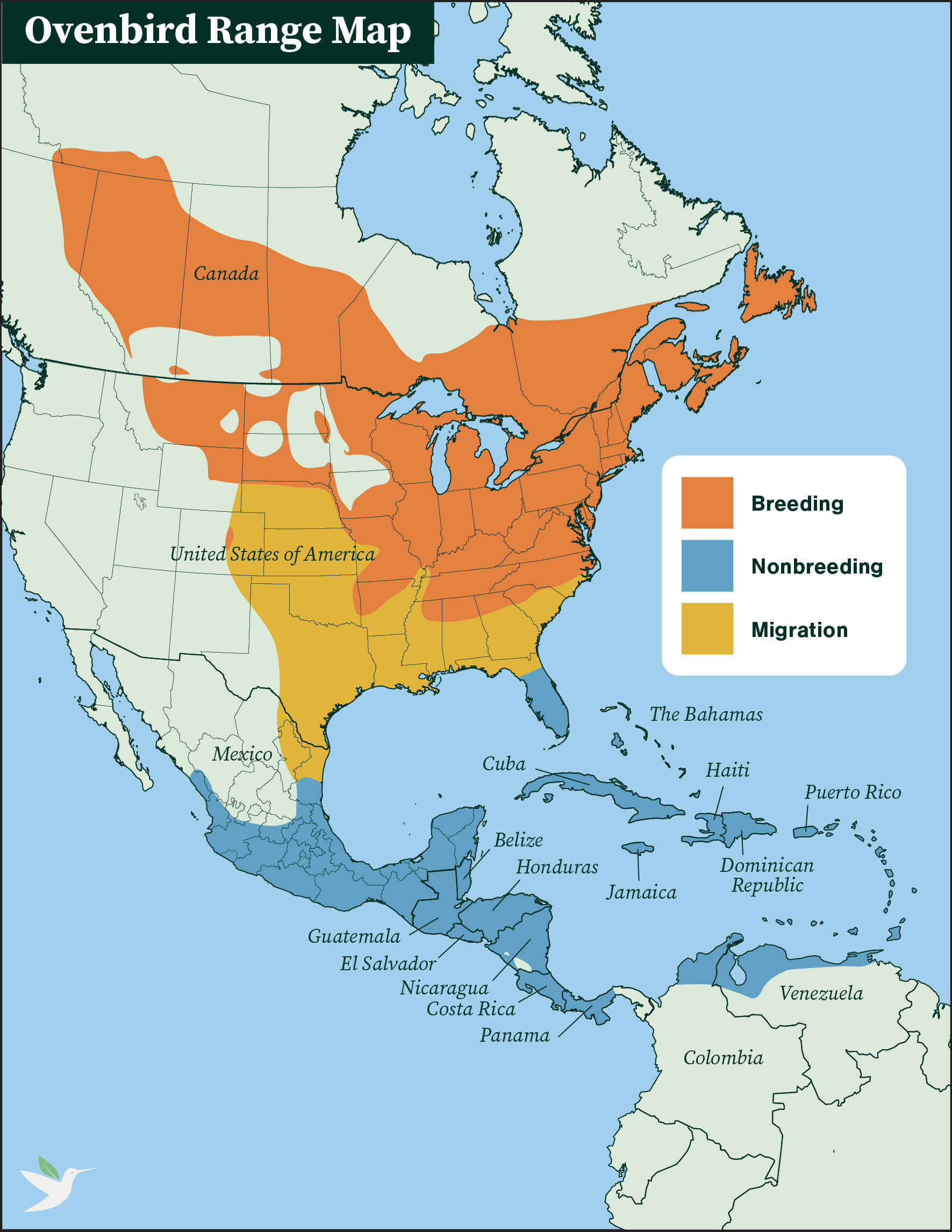
The olive-backed, ground-dwelling Ovenbird can be mistaken for a Wood Thrush at first glance, but it is actually a warbler. A closer look at this bird reveals black stripes beneath, rather than the spots of a thrush. Other identifiers are a bold white eye-ring and dark lateral stripes framing an orange crown, which the Ovenbird raises when agitated. This woodland songbird has a short tail, often cocked at a jaunty angle, and long, pink legs.
The Ovenbird gets its common name from its dome-shaped ground nest, which reminded early observers of an old-fashioned brick oven.
Despite its rather inconspicuous plumage, this charming warbler captivates scientists and artists alike.
The Walking Warbler
"When I saw the pretty bird walking with its alert air along a log, putting its little head forward at each dainty step in a manner of a diminutive chicken, I was utterly captivated,” enthused American ornithologist Edward Howe Forbush in 1929.
Unlike most other forest-dwelling warblers, such as the Kentucky Warbler or Black-throated Blue Warbler, the Ovenbird walks rather than hops. It can often be seen deliberately stepping along the forest floor as it forages — and when it is observed in trees, it is seen walking atop large branches.
Celebrated Singer
American poet Robert Frost celebrated this warbler's memorable song in his work "The Oven Bird":
"There is a singer everyone has heard,
Loud, a mid-summer and a mid-wood bird,
Who makes the solid tree trunks sound again."
Male Ovenbirds on territory sing in turns, making the woods resound with their chanting song. This emphatic series of progressively louder phrases is often described as “teacher, teacher, teacher…!”
Listen here:
(Audio: Molly Jacobson, XC419727. Accessible at www.xeno-canto.org/419727)
A Forest Spirit
The Ovenbird breeds in mature, closed-canopy forests, ideally with an abundance of leaf litter on the forest floor for foraging and nest-building. It occurs across much of Canada and the eastern and midwestern U.S. Like the Cerulean Warbler and Hooded Warbler, the Ovenbird needs undisturbed expanses of mature forest for breeding success. Habitat fragmentation makes these birds more vulnerable to brood parasites such as Brown-headed Cowbirds, and nest predators such as raccoons, chipmunks, squirrels, and snakes.
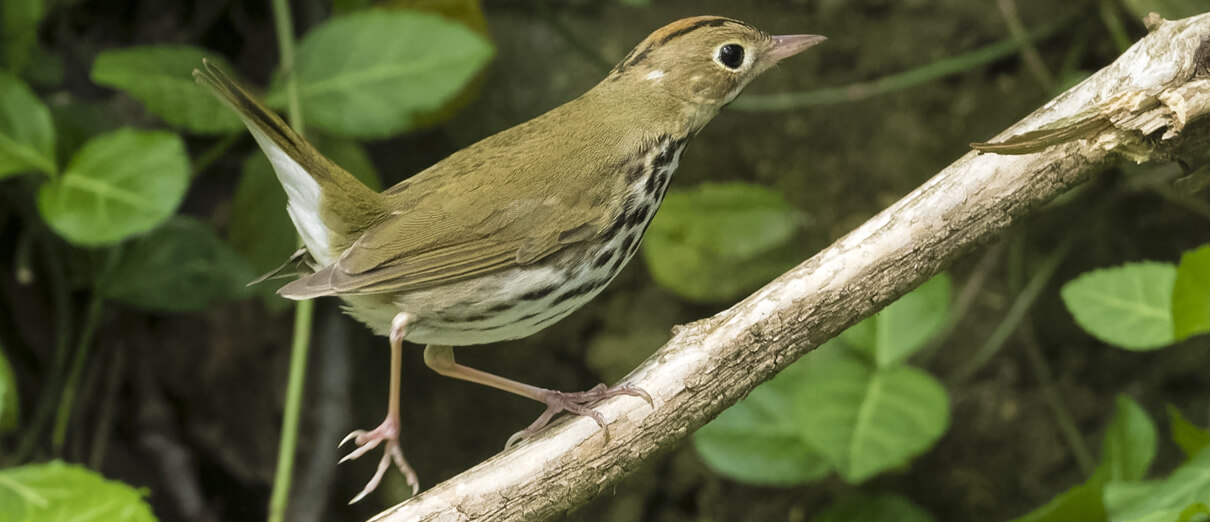
In the fall, the Ovenbird migrates to mixed forests in Florida, Mexico, Central America, and the Caribbean to spend the winter.
Three subspecies of Ovenbird are recognized, with subtle differences in plumage color.
Breeding and Feeding
The male Ovenbird uses song to claim territory and attract a mate. Once mated, the female weaves a domed nest from grasses, stems, bark, and hair, then covers it with dead leaves and sticks for camouflage. The side entrance to the nest is well-hidden and usually invisible from above. The female Ovenbird lays her three to six eggs in a smaller inner cup within the nest dome, then incubates them for about two weeks. If her nest is threatened, she will perform a broken-wing distraction display like a Killdeer or Ruffed Grouse.
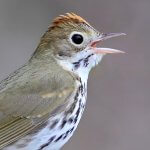
Help support ABC's conservation mission!
Both parents feed their young, which leave the nest a little more than a week after hatching, although they remain with their parents for around another month. The Ovenbird will sometimes raise two clutches in succession, particularly in years with plentiful food.
This walking warbler forages on the forest floor, tossing aside leaves to expose insects, spiders, snails, worms, and even small lizards. It will feed heavily on spruce budworms during outbreak years of that insect. During the winter, Ovenbirds supplement their diet with seeds, fruit, and ants.
Conserving a Woodsy Warbler
The forest-loving Ovenbird is vulnerable to habitat loss and fragmentation, both on its breeding and wintering grounds. Many Ovenbirds fatally collide with buildings and communications towers during migration, or fall prey to free-roaming cats.
ABC is involved in a number of large-scale conservation initiatives to protect and recover habitat for this species on its breeding and wintering grounds, including BirdScapes and Joint Ventures. Our Collisions program provides solutions to prevent bird collisions with glass, particularly at home windows, and our Cats Indoors program advocates for responsible pet ownership solutions.
Wintering Ovenbirds find refuge at Guatemala's Sierra Caral Reserve and Nicaragua's El Jaguar Reserve, both supported by ABC.
Donate to support ABC's conservation mission!





































